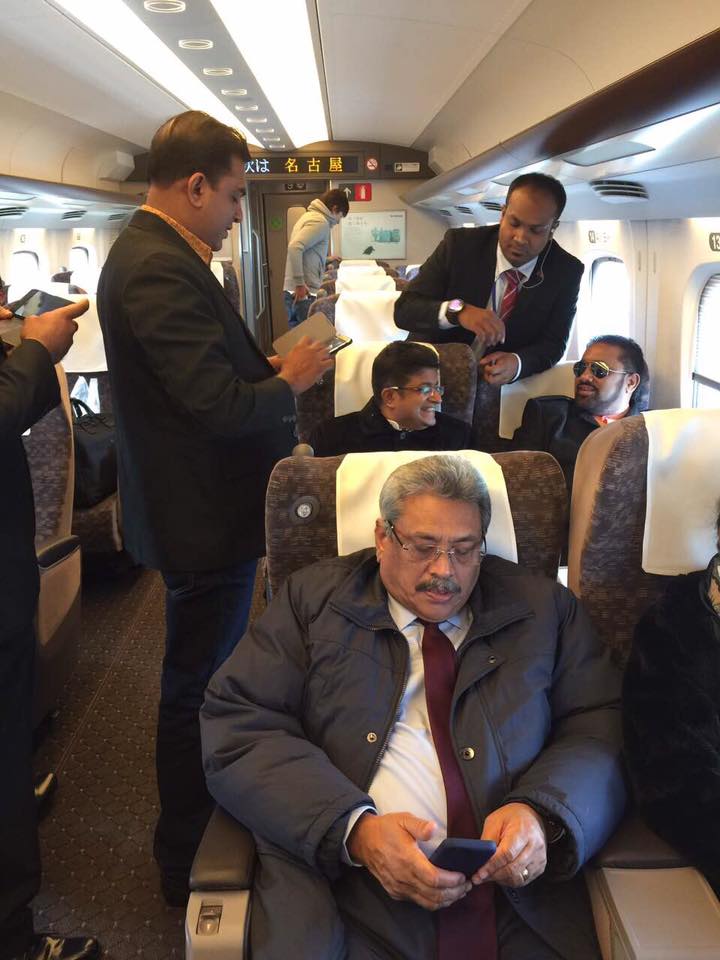Bringing In Gotabaya Rajapaksa: Playing With Fire?

By Chamindra Weerawardhana –April 24, 2017
The defining feature of present-day Sri Lankan politics is a sense of sheer inaction. The UFPA, the coalition technically headed by President Sirisena, ‘appointed’ politicos who lost the 2015 general election to parliament via the national list. This was the only way in which it could concoct a joint government with the UNP. The concoction, as such, has been farcical. It has resulted in policy incoherencies at all levels, an absolutely diabolic and inconsistent repartition of portfolios and a situation in which conflicting ideologies collide. The power [non]transfer within the same political class has resulted in the continuity of the ‘vices’ of the Rajapaksa administration, in terms of mismanaging public funds and the continuing condemnation of marginalised groups (e.g. the underprivileged, local university students, the entire state-run system of education, and the national health [non]system). Politics of austerity have been reinforced, the joint government, if not its key stakeholder – the UNP under Ranil Wickeremesinghe, Ravi Karunanayake et al. – being extremely cooperative with the World Bank and the IMF. In the rest of the joint government’s tenure, harsher austerity measures that will adversely affect the most vulnerable are to be expected.
Sri Lanka’s political economy: capitalist and repressive?
The general, if not very basic reading is that neoliberal politics in Sri Lanka ‘began’ in full swing since the open market economic reform policies of the Jayewardene administration. This, however, does not tell the full story. The state structure of present-day Sri Lanka (as in the ‘unitary’ state, a direct inheritance of the structure of a crown colony that covers the entire island, governed separately from the rest of the Imperial possessions in the Indian Subcontinent) and the island’s socioeconomic landscape are deeply interconnected to, and represent an unscathed continuity of Western (especially British) colonial rule. The Crown Colony was exploited as a commercial venture, where cheap labour and a servile local elite (the ‘cream’ of which the British ‘created’, the Bandaranaike family being the prime example) and locally-recruited (and British controlled) law enforcement ensured that the business ventures were run uninterrupted. Where disruptions occurred in the form of communal collisions (e.g. 1915 marakkala kolahalaya) they were brutally suppressed.

Colonial antecedents?
In other words, the plantation economy was the epitome of capitalism, with very cheap, if not near-free labour enabling the British and their senior local officials to make tremendous and disproportionate profits. This was how the Ceylonese economy was built. The exploitative practices of capitalism thus formed an integral element of the political economy of Ceylon, the legacy of which has persisted right throughout the dominion state to the Republic of Sri Lanka. This legacy received an unprecedented ‘kick’ from Jayewardene’s open market reform project, which continues in full swing. The point made here is that the present-day class demarcations, problems of wealth distribution, concentration of wealth among a handful are all elements of Sri Lanka’s political economy with very strong historical antecedents. They are so deeply ingrained in Sri Lankan society that anyone, or any movement that seeks to challenge them face opposition not only from the wealthy beneficiaries of the system, but also, and very especially, from those at the receiving end. This [partly] explains, for instance, the mediocre performance of the JVP, especially at the 2015 general election, despite speculations that the party would perform well. Those who are most oppressed by this rampant neoliberal capitalism are often the first to oppose the slightest move to challenge the system and its functional dynamics.

